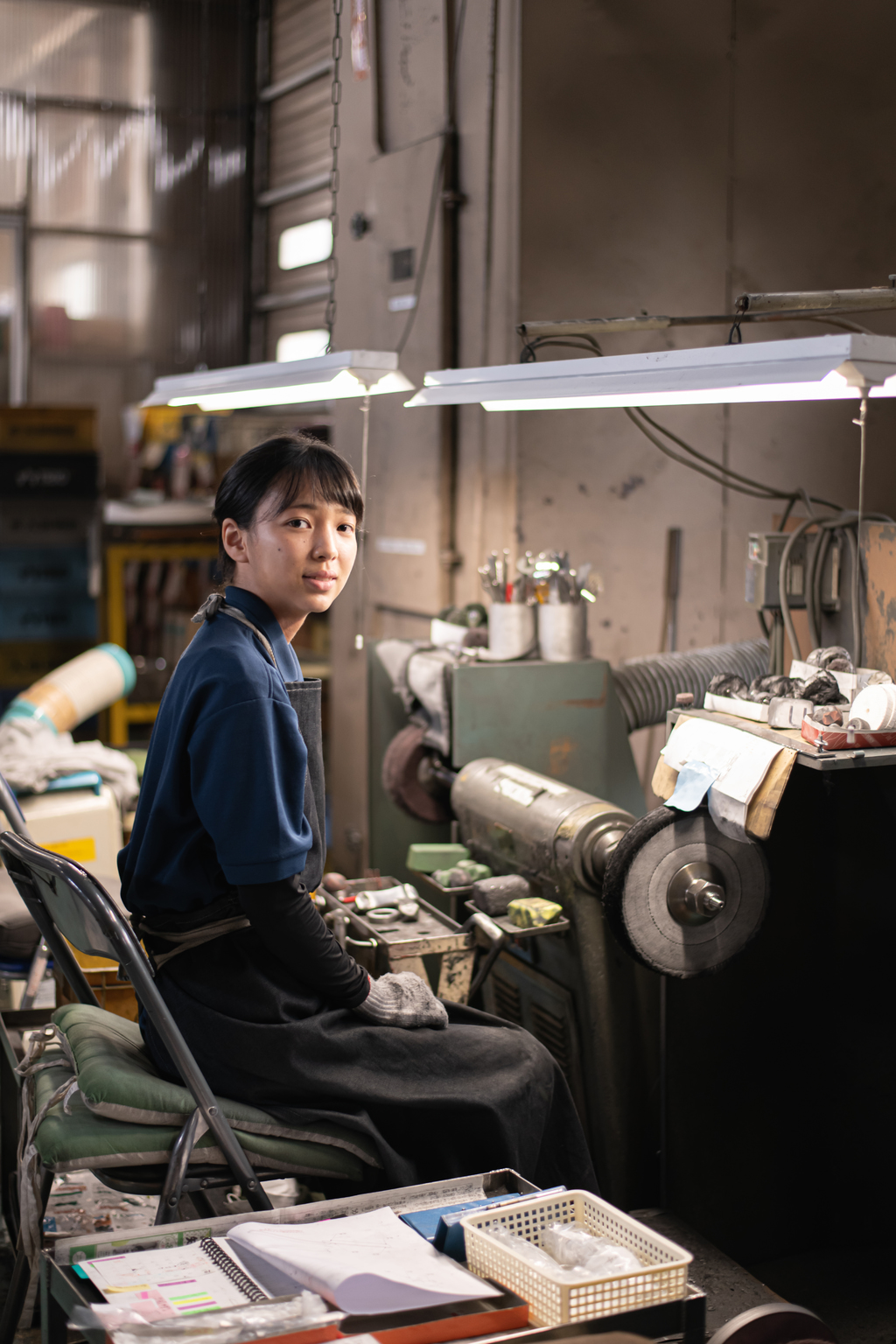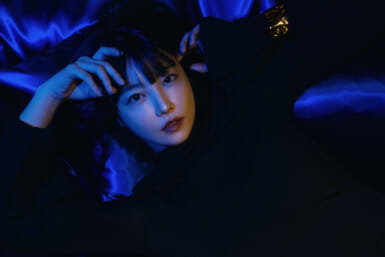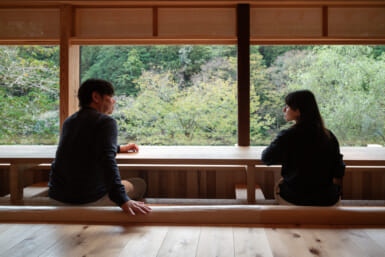There aren’t many Glaswegians in Tokyo, or even in Japan. The biggest city in Scotland, known dichotomously for engineering, education and arts on one hand and brutal violence and poverty on the other, it could fit into one compact pocket of Tokyo. With a population of just over half a million, it punches well above its weight and its people can be seen leading a variety of industries across the globe.
The Glasgow mafia, as I like to call it (I like to think that I’m one of them), is a tight-knit group of artists, creators and educators based in Japan and we seem to know or at least know of each other. I first met metalworker and artist Kathleen Reilly through mutual friends and her work and experiences in Japan immediately intrigued me. A graduate of the esteemed Glasgow School of Art and the Royal College of Art, Reilly is a recipient of the prestigious Daiwa Foundation scholarship and has spent the last year resident in Niigata Prefecture’s Tsubame, a town renowned for its metalwork and artisanship.
Reilly’s work and overall oeuvre isn’t particularly easy to pigeonhole. It forges an artistic connection between the essence of metalwork with products viewed as art. That sounds, on the surface at least, easy enough but when you figure in Reilly’s preoccupation with text and poetry and her frequent collaborations with cutting-edge restaurants and kitchens, her work begins to obfuscate the boundaries of the nature of art itself.

Oku: Exploring New Territory through Knife Design Working
Working with chefs and institutions on variations on cutlery, Reilly aims to redefine the practicality involved and the aesthetics of kitchenware. Influenced heavily by her time in Japan and Tsubame, her latest project titled Oku was selected for the Designart Tokyo ‘Under 30’ Award Program which was held in October of this year. Oku essentially explores new territory through the manner in which we interact with the everyday through a new knife design made in collaboration with local cutlery makers in Tsubame.
Influenced by traditional Japanese place setting and arrangement, Oku allows Western cutlery to interact with additional objects at the table, such as a chopping board or plate. Utilizing Tsubame City’s generations-old manufacturing techniques, the shape of Reilly’s conventional table knife’s handle is extended and folded, creating a simple design that is comfortable to hold and use, while breathing new life into the everyday dining space.
“Actually, the project has spread out beyond me collaborating with a metal factory on cutlery but now also a wood factory and even a washi paper maker based at the foot of Mount Yahiko near where I live,” Reilly recently told us. What Reilly refers to is her close involvement with artisans and companies based in Tsubame including Kasahara which skillfully manipulates various types of domestic wood and manufactures parts to go alongside the metal products produced in the area, as well as wooden goods for household use.

Poetic Packaging
The humble Glaswegian has also paired with Paper Studio Izumi which creates paper from the water that springs up at the foot of Mount Yahiko in Echigo near Tsubame City. The spring water found there is indispensable for its paper making. Using the skins of kouzo and mitsumata, which are the raw materials for washi, and the neri plants cultivated in the field in front of the workshop, the firm makes washi using traditional methods, without preservatives. Its aim is to make environmentally friendly paper using raw materials, while receiving the blessing of Mount Yahiko.
The washi element of Reilly’s project comes in the form of packaging. Not known for orthodoxy, the Scottish artist assimilates text and specifically poetry into her artwork. The packaging of her product, which comes from Paper Studio Izumi, has a poem written by Reilly and translated by book designer Michiko Onozawa inscribed on it.
Reilly explains: “It was important that I had Japanese and English texts. As my inspiration came from contrasting my UK heritage and understanding of dining placement with what I was experiencing in Japan. For example, Japanese chopsticks would be placed horizontally but Western cutlery vertically. However, English writing is read horizontally and Japanese traditionally vertically. I found this contrast really interesting and wanted to use this in my packaging to cross over the two and bring an awareness of it (subtly) to the user and viewer.”
Establishing Creative and Emotional Connections with Locals
Reilly’s journey in Japan and her determination and creativity are perfect examples of how, if you have the nous and savvy, to cultivate meaningful and ongoing relationships with local environments and craftspeople. It’s never easy to live in rural Japan and become respected enough to establish a creative and emotional connection with local people but she has shown that it is possible. This connection is genuine and she can be an inspiration for others.
“My experiences in Japan have also affected my design aesthetic,” says Reilly. “I definitely have developed more of an appreciation for beauty in simple, authentic and good design with honest materials. I have begun to consider not just the more well-known Japanese aesthetics such as wabi-sabi but also the shibui aesthetic or beauty of the simple, subtle and unobtrusive. There I have developed more of an appreciation for beauty in simple, authentic and good design with honest materials. has also been a lot of inspiration found in Japanese table arrangement and place setting that we don’t have in Western culture, for example, the dishware used for traditional meals like kaiseki and even chopsticks and chopstick rests.”

Reilly’s artwork, in some ways, reminds me of Glaswegian Booker Prize-winning author James Kelman’s assertion that, “My culture and my language have the right to exist, and no one has the authority to dismiss that.” Proudly Scottish and a progressive artist with a singular vision, Reilly’s narrative voice is very much her own. Shaped and molded from her Scottish heritage and heavily influenced by her time in Tsubame, her culture (or a fusion of her time in the UK and Japan) are visible, authentic and, in their own distinctive way, groundbreaking and beautifully provocative.
See more of Reilly’s work on her website www.kathleenreilly.co.uk
This article was published in Tokyo Weekender’s Nov-Dec 2021 magazine. Flip through the issue by clicking on the image below.










